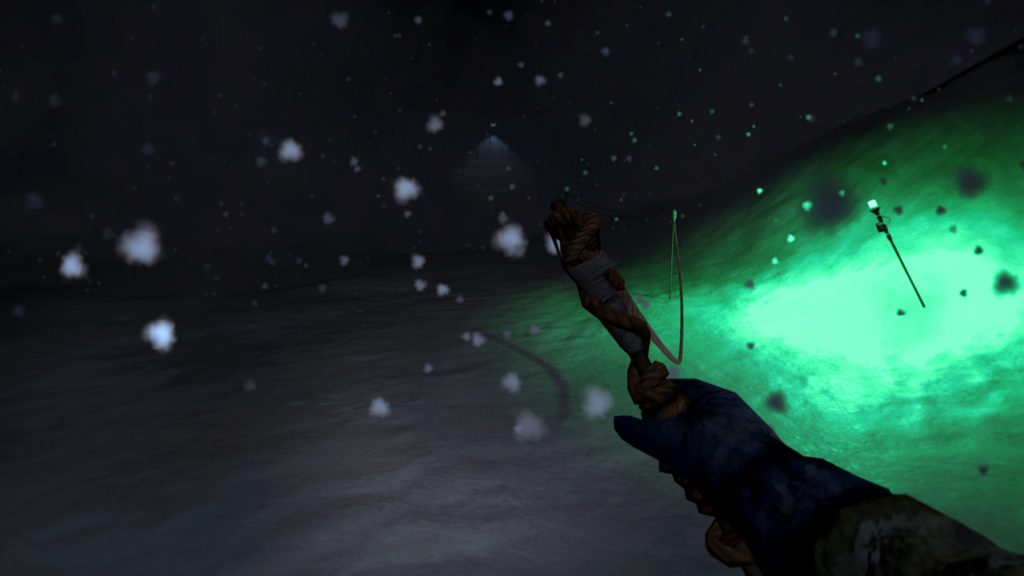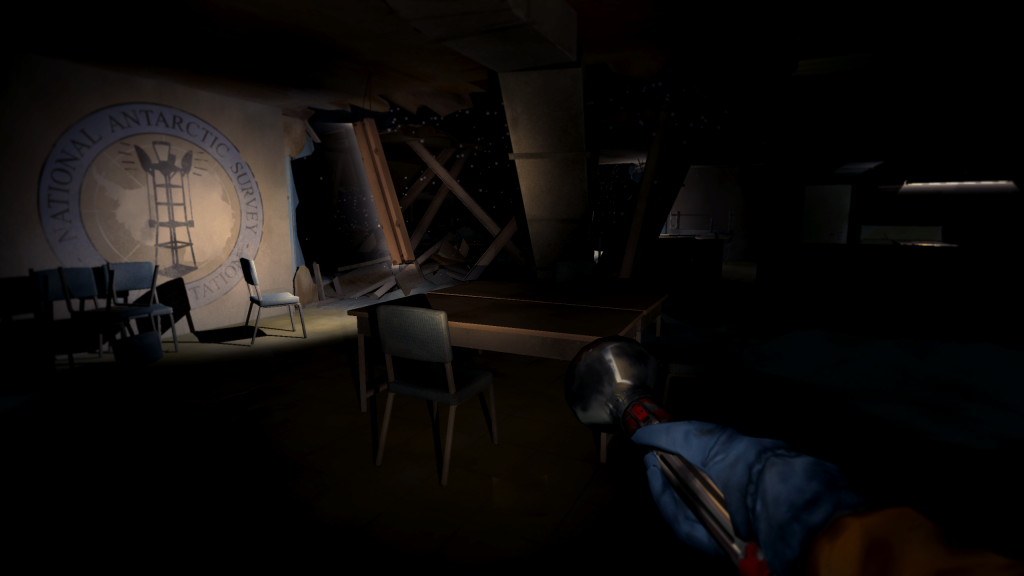As we put the finishing touches on Near Death in preparation for its launch on August 2nd, we’ve noticed that there’s some understandable confusion about what exactly the game is. Is it a survival game? A story game? A walking simulator? An action game?
There’s no simple answer to those questions, as Near Death incorporates elements from a variety of game styles and weaves them into something that doesn’t fall neatly into any predefined genre. That’s because the gameplay in Near Death is entirely designed around the scenario itself. A quote that’s inspired us since the beginning is something that Pawel Miechowski said in his 2015 talk at the Indie Game Summit: “Forget about genres. Make a game about the chosen idea.”
That’s always been our approach on Near Death, and since it’s a game about being stranded and alone at an abandoned Antarctic base, everything in the entire game stems from two simple words:
Don’t freeze.

That’s it. Every gameplay decision you make is about trying not to freeze to death. It can get as cold as 100 below zero in the game, so you can only go outdoors for a few minutes at a time before dying. You have a portable heater, but it’s only powerful enough to warm you in enclosed spaces, so you’re on a constant hunt for buildings and rooms that will protect you from the elements. Some areas are too destroyed to provide safety, while others can be made safe by feverishly covering broken windows or forcing doors closed against raging winds.
But Near Death isn’t an endless survival game. It’s not a crafting sandbox. You won’t break your ankle or worry about managing a hunger meter, though there is a lightweight crafting system that lets you create tools like light poles and equipment upgrades to better cope with the deadly environment. Playing Near Death isn’t about managing long-term meters or customizing your character; it’s always about struggling against the worst conditions on Earth and the nerve-wracking feeling of never being more than a few minutes from freezing to death.

In some areas you can find ways to restore the base’s power system in order to generate heat, but it’s never long before you have to venture back out into the frozen wastes on the next leg of your journey. That journey is dedicated to escaping Sutro Station … which is, of course, just a longer term version of the same goal: don’t freeze.
That brings us to the next element of the game, the story. Near Death has a beginning, middle, and end. You crash-land at Sutro Station, and you quickly establish contact with a team back at your home base via the tenous link of an ancient teletype machine. Using short, simple text interactions, you and the team piece together a plan that will hopefully return you safely back home. Think The Martian or Apollo 13.

Sutro Station is a fully open environment with no loading screens or level transitions; once you start the game, it’s just you and the base. Some areas of the station are inaccessible to you at first, but only because you haven’t found the tools to unlock them yet. By the end of the game you’ll have used your abilities and wits to gain mastery over the environment, traveling between safe outposts you’ve established, guided by a network of landmarks like light poles and rope trails that you’ve laid down to avoid getting lost in the disorienting, zero-visibility blizzard.
And that’s what Near Death is: a game about being stranded at an abandoned Antarctic base and fighting against the most hostile conditions on Earth in a desperate attempt to escape. Whether or not you make it home is up to you.
But you’ll be just fine if you follow one simple rule: don’t freeze.
